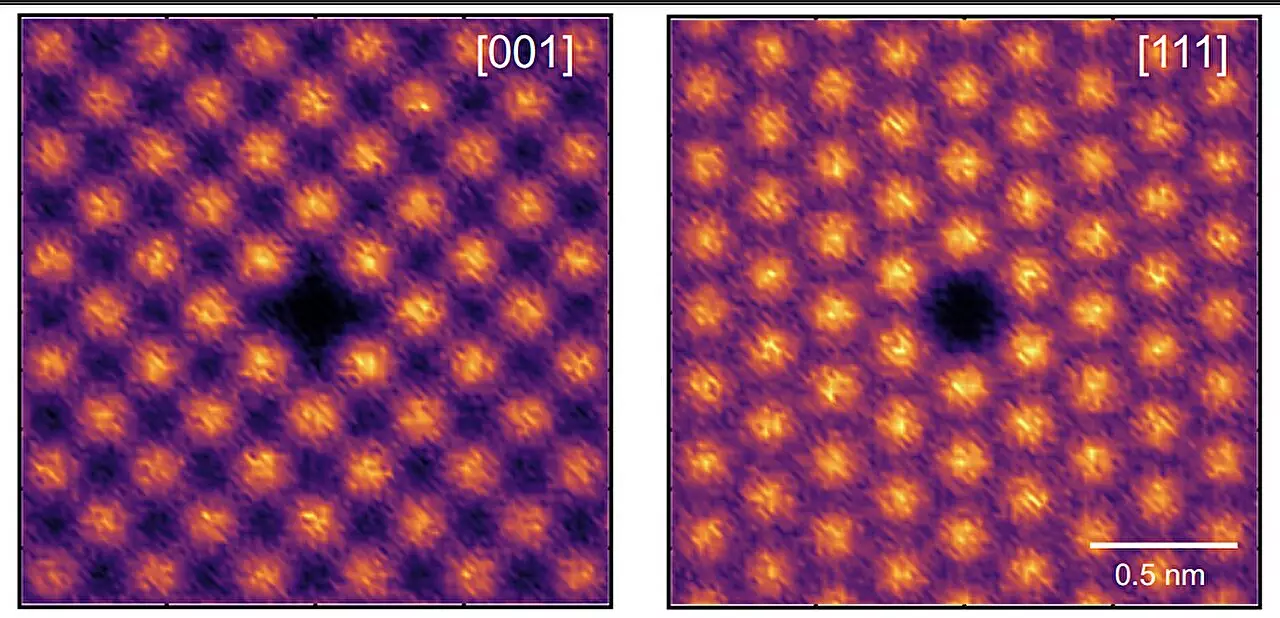A sweeping transformation is occurring within the realm of material sciences, facilitated by a novel microscopic technique that unlocks the previously obscured intricacies of atomic structures. At the forefront of this revolution is a groundbreaking study from the University of Sydney, led by Pro-Vice-Chancellor Professor Simon Ringer. This innovative approach allows researchers to meticulously analyze short-range order (SRO) within crystalline materials, which is pivotal for enhancing material performance across various industries—from aerospace engineering to advanced electronics.
The significance of this research transcends mere academic novelty; it opens doors to designing superior materials with tailor-made properties. As industries increasingly demand materials that are not only stronger but also lighter and more sustainable, the implications of this technology are incredibly far-reaching. Imagine aircraft hulls that are resilient yet lightweight, or semiconductors that provide unprecedented efficiency. The ability to decode the atomic relationships within these materials could potentially redefine our approach to engineering, focusing on atomic precision in the creation of next-generation products.
Decoding the ‘Materials Genome’
The concept of the “materials genome,” akin to the genetic blueprint of living organisms, provides an insightful analogy for this study. Just as genes dictate biological features, the specific atomic configurations within a crystal govern the material’s physical properties. This study aims not only to probe these atomic arrangements but to quantify them. Traditional methods have struggled to visualize the microscopic world where these changes occur, often leading to a superficial understanding of material behavior.
With the team’s pioneering use of atom probe tomography (APT), these microscopic mysteries are being unlocked. This advanced technique enables a three-dimensional visualization of atomic structures, offering unprecedented insight into the arrangements that govern properties like strength and elasticity. By experimenting with high entropy alloys—a class of materials increasingly recognized for their versatility—the researchers can assess how treatment processes impact SRO, aligning with modern requirements for enhanced performance in hostile environments such as jet engines or nuclear reactors.
The Role of Data Science in Material Innovation
What sets this research apart is not merely the microscopy technique but also the sophisticated data science methodologies employed to analyze the obtained results. The research team delved deep into advanced data analytics to make sense of atomic configurations, combining empirical findings with theoretical frameworks. This methodological approach ensures a well-rounded exploration of SRO, providing a blueprint for future inquiries into material performance.
Dr. Andrew Breen, a senior postdoctoral fellow, emphasizes the significance of their sensitivity analysis, which establishes the conditions under which SRO measurements are valid. This meticulous attention to detail speaks volumes about the commitment to establishing robust and reliable scientific methodologies. This framework not only enriches the understanding of current materials but also sets the stage for groundbreaking advances in material design.
Implications for Sustainable Development
As the global emphasis shifts towards sustainability, the potential of this technology is tremendously promising. The new insights into atomic relationships could lead to the development of eco-friendlier materials, ultimately fostering a paradigm shift toward sustainable manufacturing practices. Industries find themselves at a crossroads where consumer demand for environmentally conscious products increases. By tapping into atomic-level changes, manufacturers can produce materials that not only fulfill stringent performance requirements but do so with environmentally sustainable principles at their core.
The thought that industries can formulate ways to minimize waste while maximizing efficiency through atomic design is thrilling. Custom-tailoring materials on an atomic scale not only aligns with sustainable development goals but also promotes economic viability. Such advancements could potentially lower costs, reduce resource extraction, and minimize carbon footprints—a true win-win situation for both industries and the planet.
Looking Forward: The Future of Material Science
As the implications of this study reverberate through scientific communities and industry sectors alike, the call for continued exploration into SRO and its influences on material properties is compelling. The opportunities for research expansion into various types of alloys and hybrid materials beckon aspiring scientists and engineers. With further exploration, this integration of traditional material science with cutting-edge technology could yield solutions to some of the most pressing challenges facing modern engineering.
The breakthroughs enabled by this advanced microscopy technique signal a future where material properties can be more dynamically tailored to meet contemporary needs. The discourse surrounding atomic architectures reshapes not only our understanding of materials but fosters an environment ripe for innovation—an exciting prospect that could redefine industries as we know them, propelling us into a new era of engineering possibilities.

